Quick and Easy Steps to Finding Story and Article Ideas for #STORYSTORM
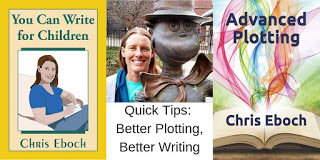 Jan is #STORYSTORM with Tara Lazar. Formerly known as #PiBoIdMo, the challenge is to come up with one new story idea each day of the month. How are you doing?
Jan is #STORYSTORM with Tara Lazar. Formerly known as #PiBoIdMo, the challenge is to come up with one new story idea each day of the month. How are you doing?Some writers have no trouble finding ideas, and only need to find enough time to tackle them all. But a couple members of my critique group have wondered what to write next. Sometimes the wellspring of ideas seems empty.
To brainstorm new ideas, sit down with a few sheets of paper and:
• Make a list of writing genres that you enjoy or would like to try — mysteries, fantasy, nonfiction articles, etc.
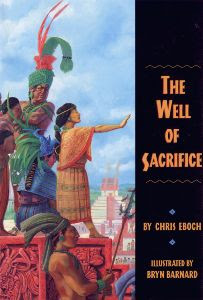 • On a new page, start jotting down your life experiences — jobs you’ve held, hobbies, sports, special interests, places you’ve lived or traveled — from childhood to the present. For example, the summer I spent traveling through Mexico and Central America inspired my Mayan historical drama,
The Well of Sacrifice
.
• On a new page, start jotting down your life experiences — jobs you’ve held, hobbies, sports, special interests, places you’ve lived or traveled — from childhood to the present. For example, the summer I spent traveling through Mexico and Central America inspired my Mayan historical drama,
The Well of Sacrifice
. • Add other subjects based on your family and friends’ experiences, anything interesting where you have an "in" for research. Do your kids play soccer? Is your husband a volunteer firefighter? Is one of your friends a graduate student studying lightning? Put it on the list.
• Now add subjects you would like to explore. If you’ve been meaning to take a Latin dance class or learn about Buddhism, add it to the list.
• Go back to the list and highlight any subjects that seem especially compelling. For example, my list would include working backstage in high school theater, and working as a glacier guide for a helicopter tour company. Those seem like natural settings for a story, even if I can’t think of a plot yet.
• Review the list of genres that interest you. Now go back over your highlighted subject list and consider each topic as it could relate to each genre. For example, I could write a fantasy set in the theater, or an action novel about a helicopter guide. Write each of these ideas on a new piece of paper, so you have room for notes.
• For each of your shortlist ideas, go back through your long list and see if you could add in another topic. Sometimes a single subject isn’t enough for a story or book, but mixing two or more subjects or ideas gives you a more fully fleshed concept. I got this from the late, brilliant children's book author Sid Fleischman. He once read that people born at midnight are supposed to be able to see ghosts. Later, had an idea about pirates who lost their treasure. He put these ideas together into his book The Ghost in the Noonday Sun. So consider moving your interesting subject to a new setting, or making your volunteer firefighter or lightning researcher into the main character.
• Keep adding to your list. Pay attention to the daily intrigues and surprises, and note them down. One night in Washington state, a friend and I went for a nighttime walk when dozens of little frogs were croaking and hopping along the road. I later sold a story to Highlights magazine about a father and child who explore a rainy night when the frogs were out.
• Pay attention to news and "human interest" stories as well. I saw an article about a helicopter crash, where everyone survived. I might use that as part of my action novel about the helicopter guide.
 • Don’t neglect nonfiction either. Would any of your subjects make for a lively article? If your kids play soccer, you could write a story about a soccer team. You could also write an article about the history of soccer, a how-to piece about a specific soccer techniques, a profile of a young star, a health article about preventing soccer injuries, or a parenting article about the pros and cons of competition in youth sports.
• Don’t neglect nonfiction either. Would any of your subjects make for a lively article? If your kids play soccer, you could write a story about a soccer team. You could also write an article about the history of soccer, a how-to piece about a specific soccer techniques, a profile of a young star, a health article about preventing soccer injuries, or a parenting article about the pros and cons of competition in youth sports.You might end this exercise with one or more ideas that have you fired up and ready to go. But in some cases, you’ll need more time to develop the concept before you start writing. Next week, I’ll discuss Turning an Idea into a Story. In the meantime, here are two more exercises to get the creative juices flowing:
Think about the most exciting, funny or scary thing that has happened to you. Make it into a story, changing the details to make it more dramatic.Ask a friend to tell you something exciting or scary or funny that has happened to him/her. Make it into a story, changing the details to make it more dramatic.
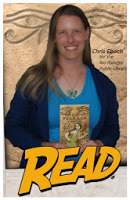 Chris Eboch is the author of over 40 books for children, including nonfiction and fiction, early reader through teen.
Chris Eboch is the author of over 40 books for children, including nonfiction and fiction, early reader through teen.Chris Eboch’s novels for ages nine and up include The Eyes of Pharaoh, a mystery in ancient Egypt; The Well of Sacrifice, a Mayan adventure; The Genie’s Gift, a middle eastern fantasy; and the Haunted series, about kids who travel with a ghost hunter TV show, which starts with The Ghost on the Stairs.
Her writing craft books include You Can Write for Children: How to Write Great Stories, Articles, and Books for Kids and Teenagers, and Advanced Plotting. Learn more at www.chriseboch.comor her Amazon page.
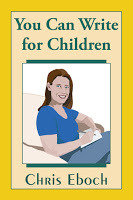 Get more advice on finding ideas, developing those ideas, and polishing your manuscripts in
You Can Write for Children
: How to Write Great Stories, Articles, and Books for Kids and Teenagers, available for the Kindle, in paperback, or in Large Print paperback.
Get more advice on finding ideas, developing those ideas, and polishing your manuscripts in
You Can Write for Children
: How to Write Great Stories, Articles, and Books for Kids and Teenagers, available for the Kindle, in paperback, or in Large Print paperback.Advanced Plotting is designed for the intermediate and advanced writer. If you struggle with plot or suspect your plotting needs work, this book can help. Use the Plot Outline Exercise to identify and fix plot weaknesses. Learn how to get off to a fast start, prop up a sagging middle, build to a climax, improve your pacing, and more.
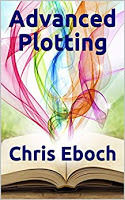 This really is helping me a lot. It’s written beautifully and to-the-point. The essays really help you zero in on your own problems in your manuscript. The Plot Outline Exercise is a great tool!
This really is helping me a lot. It’s written beautifully and to-the-point. The essays really help you zero in on your own problems in your manuscript. The Plot Outline Exercise is a great tool!I just read and—dissected—your well written book: Advanced Plotting. It’s now highlighted in bright orange and littered with many of those little 3M sticky labels. GOOD JOB. There are too many just-for-beginners books out there. Yours was a delight.
Published on January 08, 2020 05:10
No comments have been added yet.



